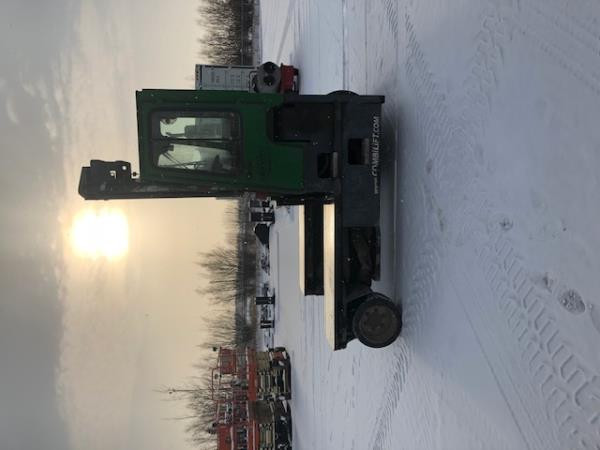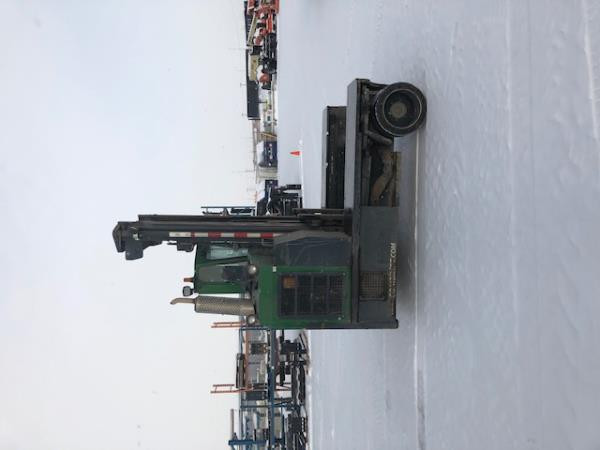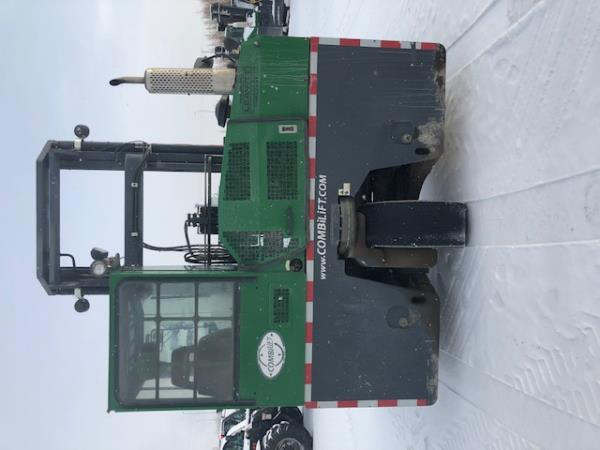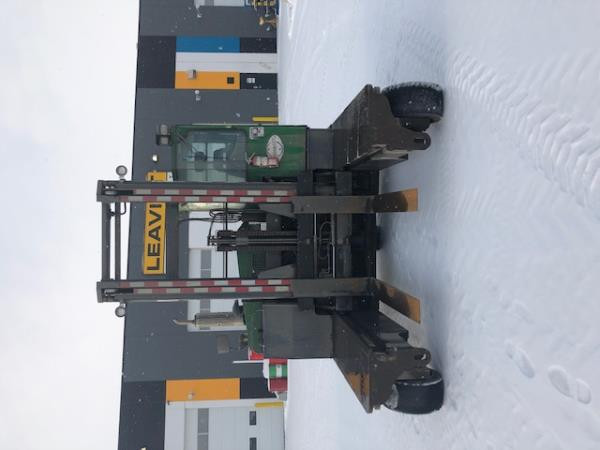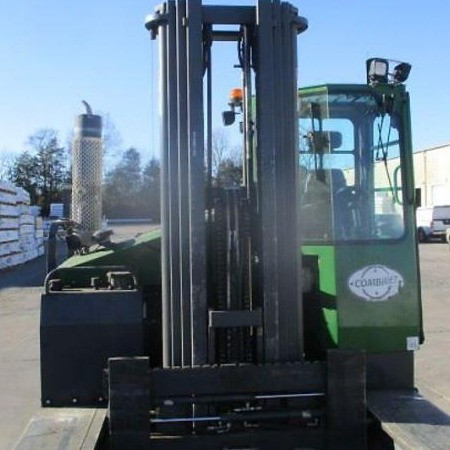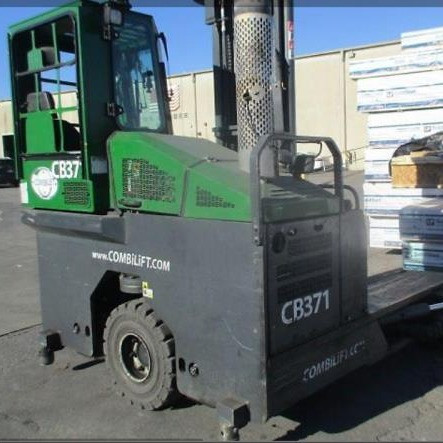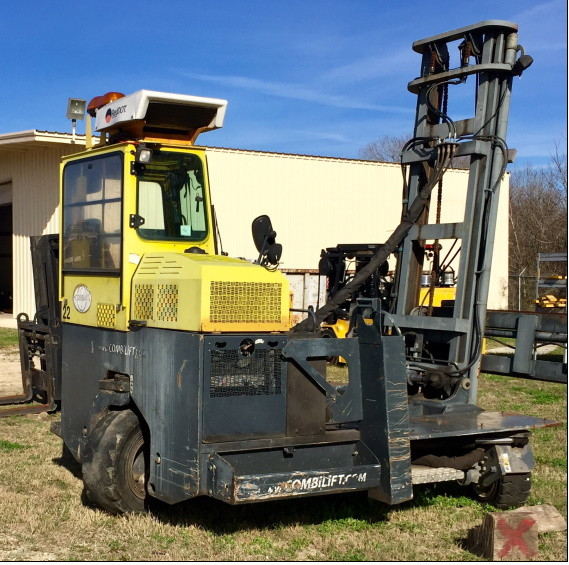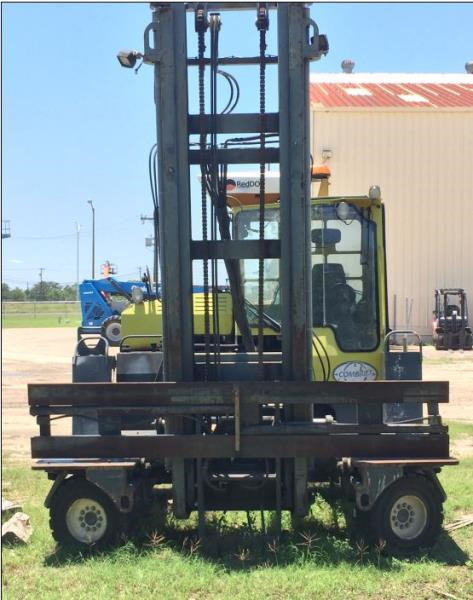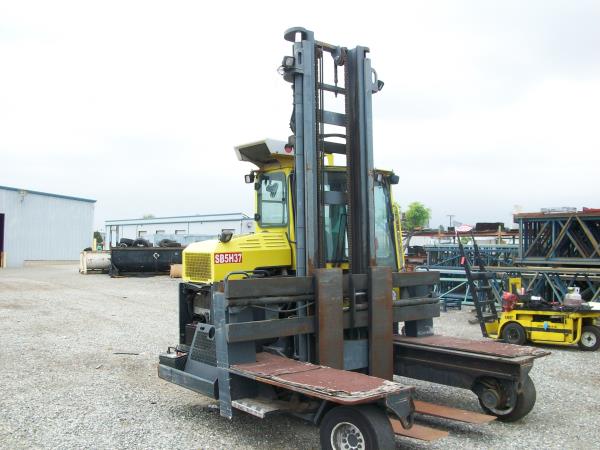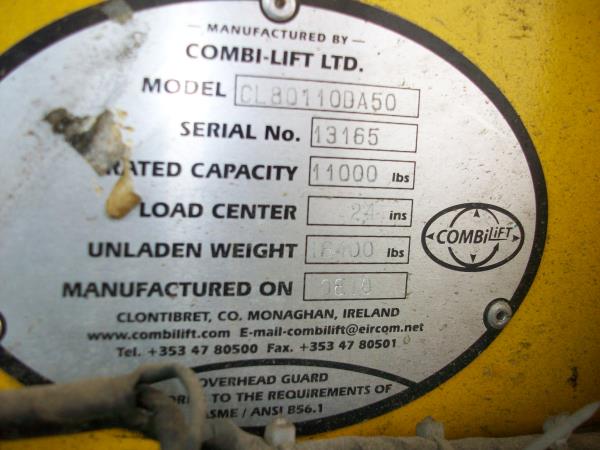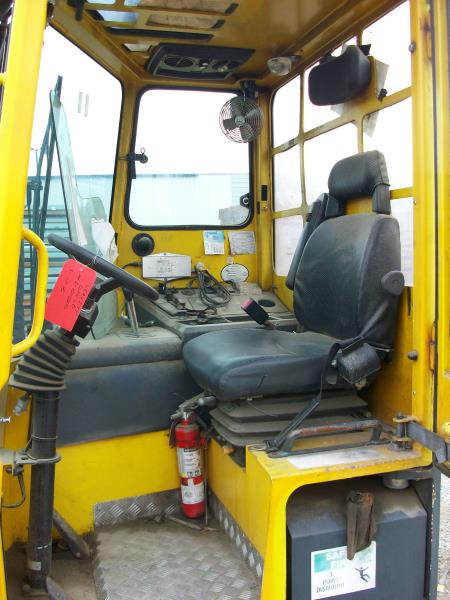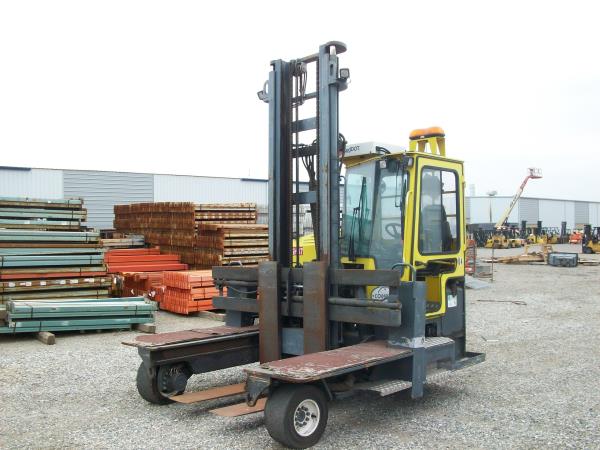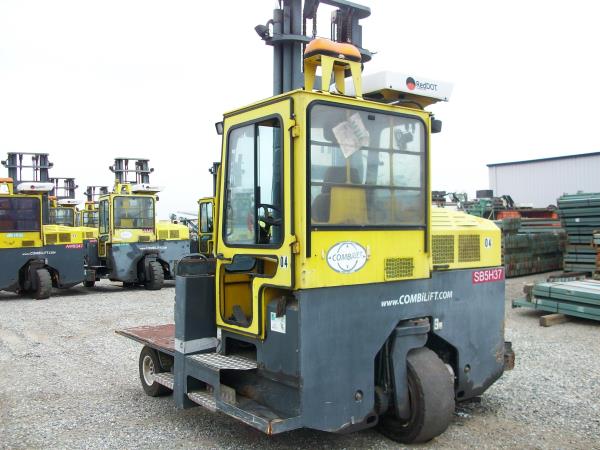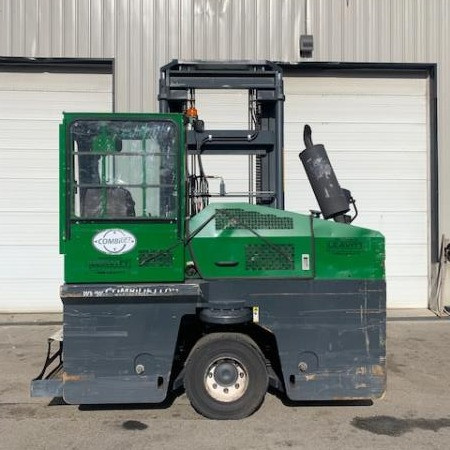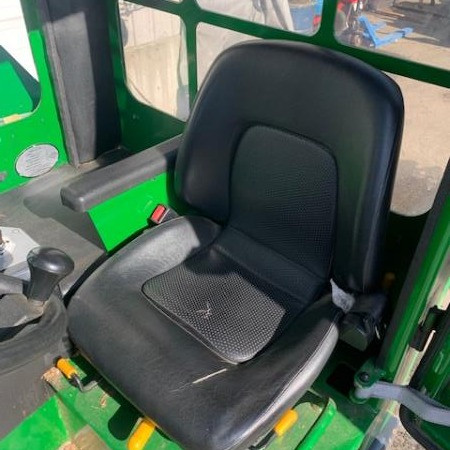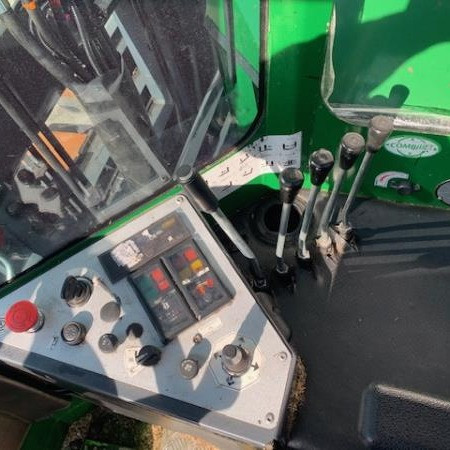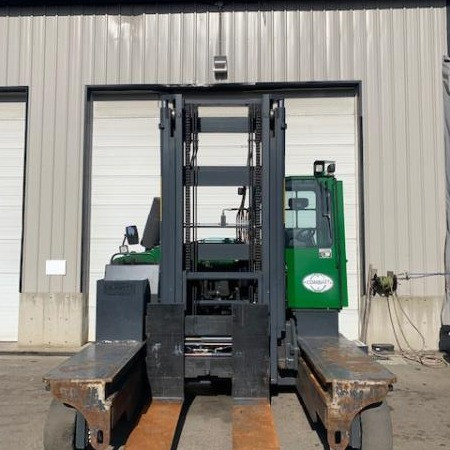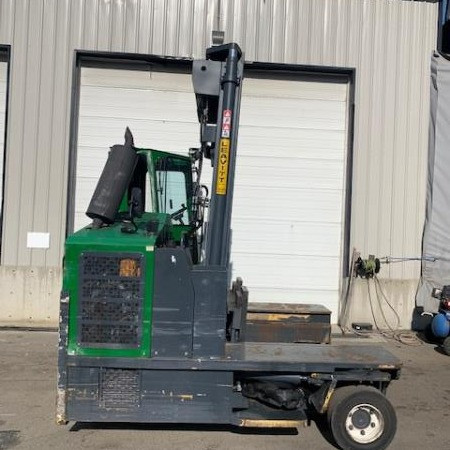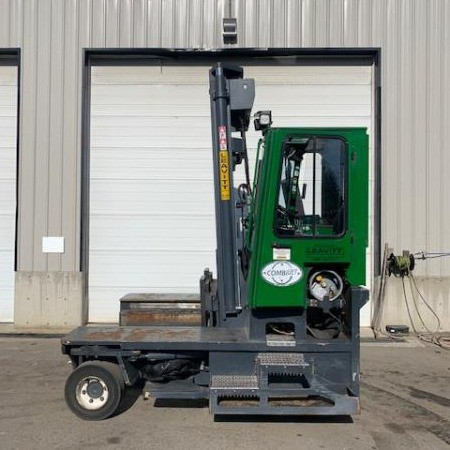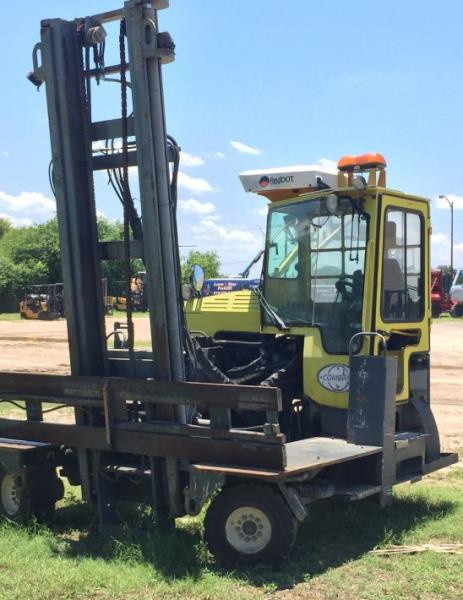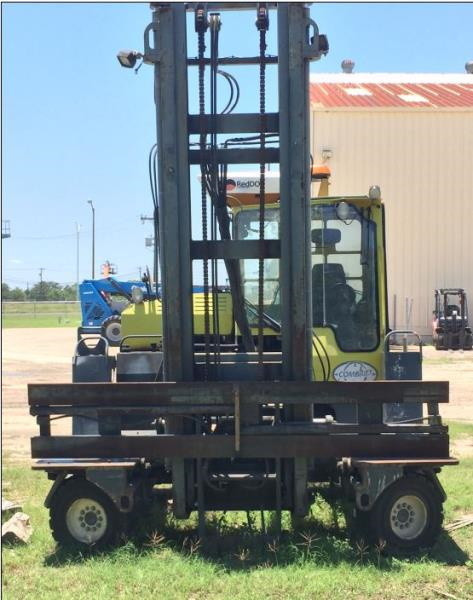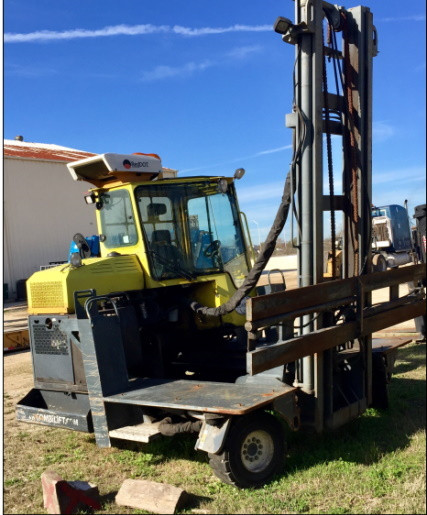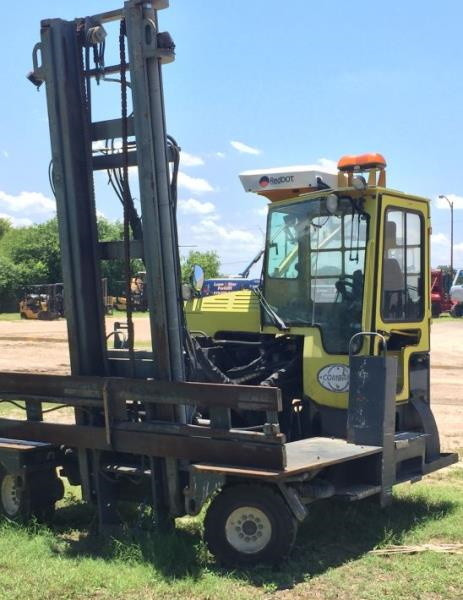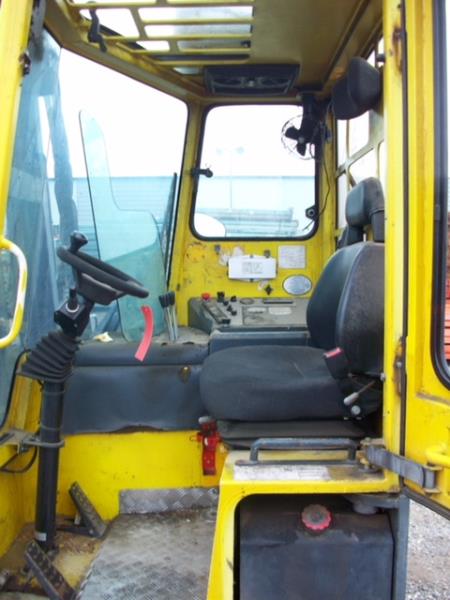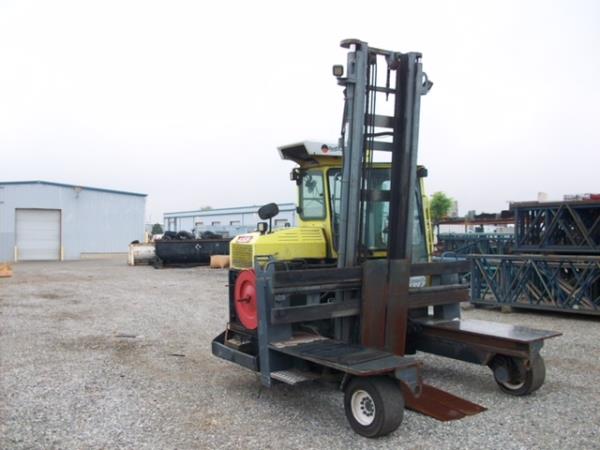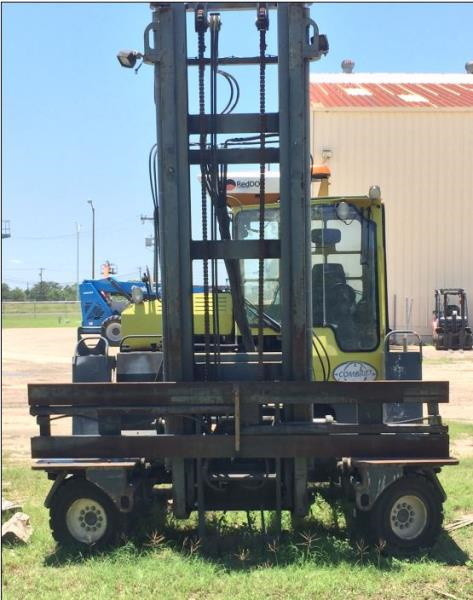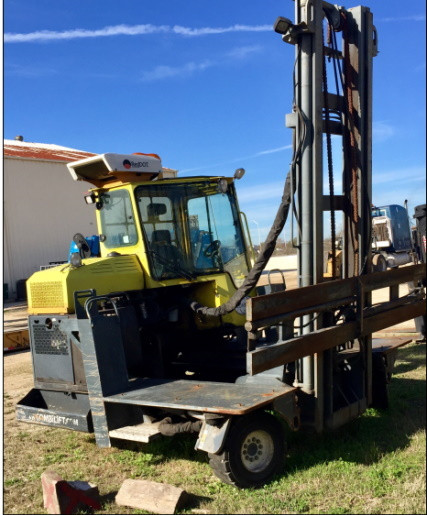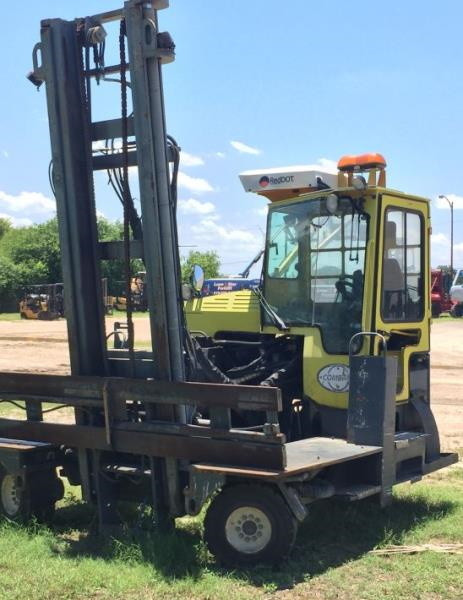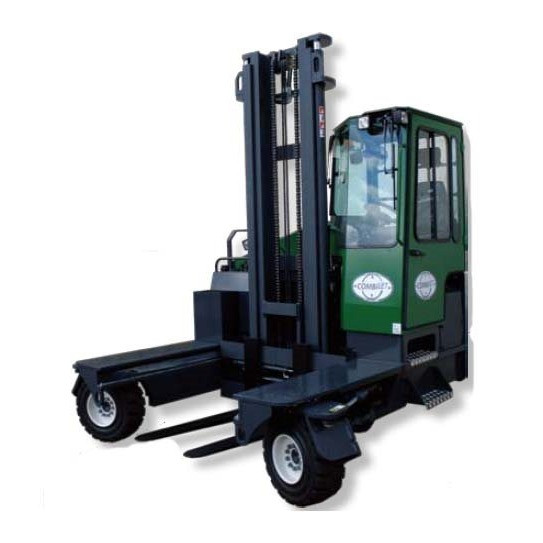Multi Directional Forklift Fontana
Used Side Loader Forklift Fontana - Side loader forklifts are ideal for lifting long and heavy materials in narrow locations such as warehouse aisles, loading docks, lumber yards, etc. These machines have derived their name from the way they unload, load and transport material.
Benefits of Side Loader Forklifts v Standard Forklifts
It is common for forklifts that rely on the standard counterbalance design to potentially become unstable when unloading or loading heavy items. The side loader forklift can tackle these awkward loads including timber and extensive pipes with greater stability. Excessive loads including pipes, steel or timber can be handled easier thanks to the design of having the load face the direction of travel. Side loaders offer a safer, unobstructed view for the operator which is a greater improvement over the standard forklift with its front-carrying design and the fork tines.
Side loaders can access narrow aisles and tinier doorways with ease since loads are transported down the side of the machine instead of on the front as with a standard forklift. The load may have to be raised on regular forklifts to travel around obstacles that increase the chances of tipping over. Much of the maneuvering is eliminated with side loaders. Operating in narrow warehouse locations is much safer and more accurate with side loaders.
Programmable travel speeds can be found on many models. Units can lift up to twelve thousand pounds and travel at speeds greater than five miles an hour. Programmable travel speeds are useful for allowing operators to match speed for particular jobs.
Types of Side Loader Forklifts
Class 2 - Electric Motor Narrow Aisle Trucks
Side loader forklifts often fall under the Class 2 - Electric Motor Narrow Aisle Trucks classification. This kind of forklift classification covers electrically sourced narrow aisle forklifts. Excellent for operating in loading docks and warehouses, these units rely on narrow aisle configuration and are moved between close quarters common for storing lumber, bar stock, laminate and carpet. These machines are additionally used for rack storage and feeding machine tools. Narrow aisle locations are popular in warehouses for allowing maximum storage design and efficiency. Class 2 side loaders take up less space compared to traditional forklift trucks. This design facilitates better speed and efficiency for moving, loading and unloading aisles. Dangerous internal combustion emissions are eliminated due to their electrical power use, making side loaders excellent for interior applications.
Internal Combustion Engine Side Loader Forklifts
Side loaders that are not powered by electricity obviously do not fall under the Class 2 forklift classification. Side loaders are common at steel and pipe yards and lumber and timber yards. They accurately transport loads from storage areas including racking, flatbeds, and stacking loads in blocks. Exterior side loaders need to work outside and on uneven surfaces. This means an internal combustion engine and, sometimes, pneumatic tires are a better option for the job. Side loaders are great for these work environments as they are built to handle the length of items and the weight. Picking items up in the middle is vital for loading and unloading long materials safely and efficiently.
Side Loader Forklift Design
The side loader forklift comes in two basic designs:
1. Stand on; and
2. Sit down.
Stand On Side Loader Forklifts
Used mostly indoors in applications such as warehouses, the stand on end control has a small platform area surrounded by the forklift’s controls, usually located in the middle of the truck, for the operator to stand. The stand on unit has many advantages. Stand-on side loaders don’t have an operator seat, allowing for a more streamlined cab design. This means the forklift has a smaller footprint which is an advantage when maneuvering around tight, high-traffic areas. Especially while operating in reverse, there is greater operator visibility from a standing position. While standing, the operator can turn their body to see the back of the forklift truck while in reverse. In a sit-down machine, operators need to twist their neck and back to get a clear view. Stand-up models have comfort and safety. Better operator visibility lessens injuries and product damage. Operators can get onto and off of the stand up forklift faster compared to a sit-down model and this may increase efficiency in certain situations.
Sit Down Side Loader Forklifts
Sit-down loaders are more popular than standing loaders. Similar to the side loader stand, the sit-down unit features a centrally located cab. The sit-down models have a raised platform and a seat that is opposite to the controls. The advantages of a sit down side loader are mostly in operator comfort. Operators can control the machine from a resting position, greatly reducing fatigue and increasing productivity.
Customizable Features
Customizable bed lengths are a feature and benefit of side loader forklifts. The standard bed length for a side loader was designed to fit a variety of bulky and heavy loads but this can be extended upwards of 60 inches to meet custom jobsite applications. However, when customizing a side loader feature such as the bed length, consideration must be given to the width of aisles at the relevant jobsite as guide rails and aisles may need adjusting to accommodate the extra sized forklift, which is likely to affect budget and productivity.
These machines can function in a multidirectional manner. Crab steering on side loaders refers to having two wheels function independently from the other wheels. This feature allows the side loader to move in all four directions by changing the direction of the wheels, allowing the forklift to move sideways into narrow storage aisles without making large, swing-out turns or multiple adjustments. The smaller turning radius helps to avoid damage to items and the building while increasing safety. It also increases efficiency by lessening the time and space needed to maneuver around the job site.
It is possible to customize a variety of side loader forklift features for specific jobs. Tine length, mirrors, lights, lift mast heights and lift capacities are some of the custom options available.
Certain features are also adjustable, allowing for further customization of the side loader for the particular job application. Travel speed, acceleration time, load limits and breaking force can all be set allowing further job efficiency and increased workplace safety.
For all of the above reason, the side loader forklift has become the most popular option for workplaces where space is limited and long loads are involved.
Multi Directional Forklift PDF
Stock Number: 206080 GL
Make: COMBILIFT
Model: C20000
Year: 2011
| Stock Number |
206080 GL |
| Make |
COMBILIFT |
| Model |
C20000 |
| Year |
2011 |
| Category |
Side Loader Forklift |
Stock Number: EQU020234 GL
Make: COMBILIFT
Model: C8000
Year: 2015
| Stock Number |
EQU020234 GL |
| Make |
COMBILIFT |
| Model |
C8000 |
| Year |
2015 |
| Category |
Side Loader Forklift |
Stock Number: EQU008139 GL
Make: Combilift
Model: C12000
Year: 2008
| Stock Number |
EQU008139 GL |
| Make |
Combilift |
| Model |
C12000 |
| Year |
2008 |
| Category |
Side Loader |
Stock Number: EQU008120 GL
Make: Combilift
Model: CL80110DA50
Year: 2008
| Stock Number |
EQU008120 GL |
| Make |
Combilift |
| Model |
CL80110DA50 |
| Year |
2008 |
| Category |
Side Loader |
Stock Number: 208235 GL
Make: COMBILIFT
Model: C17300
Year: 2014
| Stock Number |
208235 GL |
| Make |
COMBILIFT |
| Model |
C17300 |
| Year |
2014 |
| Category |
Side Loader Forklift |
Stock Number: EQU008136 GL
Make: Combilift
Model: C12000
Year: 2008
| Stock Number |
EQU008136 GL |
| Make |
Combilift |
| Model |
C12000 |
| Year |
2008 |
| Category |
Side Loader Forklift |
Stock Number: EQU008115 GL
Make: Combilift
Model: C12000
Year: 2008
| Stock Number |
EQU008115 GL |
| Make |
Combilift |
| Model |
C12000 |
| Year |
2008 |
| Category |
Side Loader Forklift |
Stock Number: EQU008127 GL
Make: Combilift
Model: CL80110DA50
Year: 2008
| Stock Number |
EQU008127 GL |
| Make |
Combilift |
| Model |
CL80110DA50 |
| Year |
2008 |
| Category |
Side Loader |
Stock Number: EQU008107 GL
Make: Combilift
Model: C12000
Year: 2008
| Stock Number |
EQU008107 GL |
| Make |
Combilift |
| Model |
C12000 |
| Year |
2008 |
| Category |
Side Loader |
Stock Number: EQC015972 GL
Make: Combilift
Model: CB6000
Year: 2018
| Stock Number |
EQC015972 GL |
| Make |
Combilift |
| Model |
CB6000 |
| Year |
2018 |
| Category |
Side Loader Forklift |
Stock Number: EQC004281 GL
Make: Combilift
Model: C10000XL
Year: 2017
| Stock Number |
EQC004281 GL |
| Make |
Combilift |
| Model |
C10000XL |
| Year |
2017 |
| Category |
Side Loader Forklift |
Stock Number: EQC007681 GL
Make: Combilift
Model: C10000XL
Year: 2017
| Stock Number |
EQC007681 GL |
| Make |
Combilift |
| Model |
C10000XL |
| Year |
2017 |
| Category |
Side Loader Forklift |
Stock Number: EQU008128 GL
Make: Combilift
Model: CL80110DA50
Year: 2008
| Stock Number |
EQU008128 GL |
| Make |
Combilift |
| Model |
CL80110DA50 |
| Year |
2008 |
| Category |
Side Loader |


